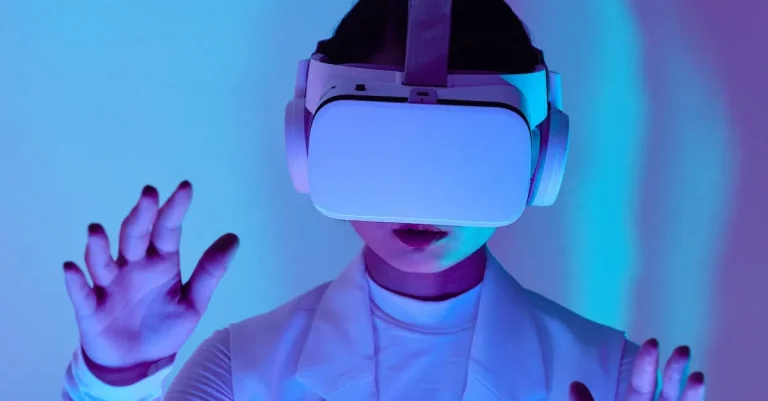How Is Mass Measured In Science?
Mass is a fundamental property of matter that quantifies the amount of matter in an object. Understanding how to accurately measure mass is essential across many scientific fields, from physics to engineering to space exploration.
If you’re short on time, here’s a quick answer to your question: Mass is measured using a balance scale by comparing an unknown mass to a known mass standard. The SI unit of mass is the kilogram (kg).
In this comprehensive guide, we will explore everything you need to know about measuring mass in science. We’ll cover the definition of mass, mass vs. weight, different devices used to measure mass, mass measurement units, and real-world examples of mass measurement.
What is Mass in Physics?
In physics, mass is a fundamental property of matter. It is a measure of the amount of matter an object contains. Mass is often confused with weight, but they are not the same thing. Weight is the force exerted on an object due to gravity, while mass is a measure of the object’s inertia.
Mass is commonly measured in kilograms (kg), although other units such as grams (g) and pounds (lb) are also used. The International System of Units (SI) defines the kilogram as the base unit of mass. This means that all other units of mass are derived from the kilogram.
Measuring Mass
There are several methods used to measure mass in physics. One common method is to use a balance, which compares the mass of an object to that of known masses. This allows for a direct measurement of an object’s mass.
Another method is to use a device called a spring balance, which measures the force exerted by an object due to its mass.
Mass can also be measured indirectly using Newton’s second law of motion, which states that the force acting on an object is equal to its mass multiplied by its acceleration. By measuring the force and acceleration of an object, its mass can be calculated.
Importance of Mass in Physics
Mass plays a crucial role in many areas of physics. It is a fundamental property that affects an object’s behavior and interactions with other objects. For example, mass determines an object’s inertia, which is its resistance to changes in motion.
Objects with larger masses have greater inertia and require more force to accelerate or decelerate.
Mass also influences the gravitational force between objects. According to Newton’s law of universal gravitation, the force of attraction between two objects is directly proportional to the product of their masses and inversely proportional to the square of the distance between them.
Mass vs. Weight
When it comes to measuring objects, the terms “mass” and “weight” are often used interchangeably in everyday conversation. However, in the field of science, they have distinct meanings and are measured differently.
What is Mass?
Mass refers to the amount of matter an object contains. It is a fundamental property of an object and is independent of its location. In other words, an object’s mass remains the same regardless of whether it is on Earth, the moon, or in outer space.
Mass is commonly measured using a balance or a scale. These instruments compare the unknown mass of an object to a known mass, allowing scientists to determine the mass accurately. The unit commonly used for mass is the kilogram (kg).
What is Weight?
Weight, on the other hand, is the force exerted on an object due to gravity. It depends on the mass of the object and the strength of the gravitational field it is in. Weight is not a fundamental property of an object and can vary depending on the location.
The measurement of weight takes into account the acceleration due to gravity. On Earth, this value is approximately 9.8 meters per second squared (m/s^2). The unit commonly used for weight is the newton (N).
Comparison between Mass and Weight
| Mass | Weight |
|---|---|
| Remains constant regardless of location | Varies depending on the strength of the gravitational field |
| Measured using a balance or scale | Measured using a spring scale or a more complex device called a dynamometer |
| Unit: kilogram (kg) | Unit: newton (N) |
Understanding the distinction between mass and weight is essential in various scientific disciplines. Whether it’s in physics, chemistry, or engineering, accurately measuring and understanding these concepts is crucial for making precise calculations and predictions.
For more information on mass and weight, you can visit the Encyclopedia Britannica or the NASA website.
Devices Used to Measure Mass
Balance Scale
The balance scale is one of the oldest and most commonly used devices to measure mass in science. It consists of a horizontal beam supported by a central pivot point, with two pans hanging from each end.
Objects of unknown mass are placed on one pan, while known masses are added to the other pan until the scale balances. The mass of the object is then determined by comparing it to the known masses. Balance scales are often used in laboratory settings and are known for their accuracy and reliability.
Triple Beam Balance
The triple beam balance is a more advanced version of the traditional balance scale. It has three beams with sliding weights that allow for more precise measurements. The first beam has a larger weight range, typically from 0 to 10 grams.
The second beam has a smaller weight range, usually from 0 to 100 grams. The third beam, known as the rider beam, allows for even finer adjustments, typically in increments of 0.1 grams. This device is commonly used in educational settings to teach students about mass and measurement.
Electronic Balance
Electronic balances are modern devices that use electronic sensors to measure mass. These balances are highly accurate and provide digital readouts of the measured mass. They are often equipped with features such as tare function, which allows for the subtraction of the mass of a container, and automatic calibration.
Electronic balances are widely used in scientific research, pharmaceutical laboratories, and industrial settings where precise measurements are required.
Inertial Balance
The inertial balance is a specialized device used to measure the mass of an object by determining its inertial response to a known force. It works by subjecting the object to a known acceleration and measuring the resulting force exerted on the object.
By using Newton’s second law of motion, the mass can be calculated based on the measured force and known acceleration. Inertial balances are commonly used in aerospace engineering and other fields where traditional weighing methods are not feasible or accurate enough.
These devices play a crucial role in scientific research, manufacturing, and everyday life. They provide accurate and reliable measurements of mass, which is essential for a wide range of applications, from determining the weight of ingredients in a recipe to measuring the mass of celestial bodies.
Whether it’s a balance scale, a triple beam balance, an electronic balance, or an inertial balance, these devices help us understand the physical world and make precise measurements with confidence.
Units of Mass Measurement
Mass is a fundamental concept in the field of science. It refers to the amount of matter an object contains. In order to accurately measure mass, scientists use standardized units. These units provide a common language for scientists to communicate and compare measurements.
Let’s explore some of the most commonly used units of mass measurement.
Kilogram (kg)
The kilogram (kg) is the base unit of mass in the International System of Units (SI). It is defined as the mass of the International Prototype of the Kilogram, a platinum-iridium cylinder stored at the International Bureau of Weights and Measures in France.
The kilogram is widely used in scientific research and everyday life for measuring larger masses, such as the weight of a person or a car.
Gram (g)
The gram (g) is a smaller unit of mass derived from the kilogram. It is equal to one-thousandth of a kilogram. The gram is commonly used for measuring smaller masses, such as the weight of food ingredients or the mass of a paperclip.
It is a convenient unit for everyday use and is often found on nutrition labels or recipes.
Milligram (mg)
The milligram (mg) is an even smaller unit of mass, equal to one-thousandth of a gram. It is commonly used in scientific and medical fields for measuring very small quantities, such as the dosage of medication or the concentration of substances in a solution.
The milligram is also used in the analysis of environmental samples and in the manufacturing of electronic components.
Others
In addition to the kilogram, gram, and milligram, there are other units of mass measurement used in specific contexts. For example, in astronomy, the solar mass is used to describe the mass of celestial bodies.
In atomic physics, the atomic mass unit (amu) is used to measure the mass of atoms and molecules. These specialized units allow scientists to work with extremely large or small masses that are beyond the scope of everyday measurements.
Understanding the units of mass measurement is crucial in scientific research and various fields of study. It enables scientists to make accurate measurements, analyze data, and draw meaningful conclusions.
Whether it is measuring the weight of a person, determining the dosage of medication, or studying celestial bodies, the units of mass provide a standardized and reliable framework for scientific inquiry.
Real-World Examples of Mass Measurement
Weighing Food Items
One common example of mass measurement in our everyday lives is when we weigh food items. Whether you’re following a recipe or trying to portion your meals, knowing the mass of ingredients is crucial for achieving the desired results.
By using a kitchen scale or a measuring cup, you can accurately measure the mass of ingredients like flour, sugar, or vegetables. This allows you to create delicious meals and bake mouth-watering desserts with precision.
Weighing Chemicals in a Lab
In a scientific laboratory, accurate measurements are essential for conducting experiments and analyzing results. Scientists often measure the mass of chemicals to ensure the correct amount is used in their experiments.
This is crucial for maintaining the integrity of their research and obtaining reliable data. By using sensitive analytical balances, scientists can measure the mass of chemicals down to the tiniest fraction of a gram.
Measuring Fuel for Space Travel
When it comes to space travel, every gram counts. Measuring the mass of fuel accurately is crucial for determining the amount needed for a successful mission. For example, NASA carefully measures the mass of rocket propellant to ensure that spacecraft have enough fuel to reach their intended destinations.
By accurately measuring the mass of fuel, scientists and engineers can calculate the trajectory and make necessary adjustments to ensure a safe and efficient journey.
Weighing Packages for Shipping
If you’ve ever shipped a package, you’ve likely encountered mass measurement in action. Shipping companies rely on accurate mass measurements to determine the cost of shipping and ensure packages are handled safely.
By using scales that can handle heavy loads, postal workers and courier services can determine the exact mass of a package and apply the appropriate postage. This ensures that packages are delivered to their destinations without any issues.
Measuring Medicine Doses
Precision is paramount when it comes to medicine. Healthcare professionals carefully measure the mass of medication to ensure patients receive the correct dosage. In hospitals and pharmacies, pharmacists use calibrated scales to measure the mass of medication, allowing them to prepare accurate doses for patients.
This ensures that patients receive the right amount of medication for their specific needs, promoting their well-being and recovery.
Conclusion
In conclusion, mass is a fundamental property of matter that is measured by comparison to a known standard using devices like balance scales. While related to weight, mass is an innate property while weight changes based on gravity.
There are several different units used to quantify mass, with the SI standard being the kilogram. Accurate mass measurement is critical across scientific fields from retail to engineering to space exploration.







